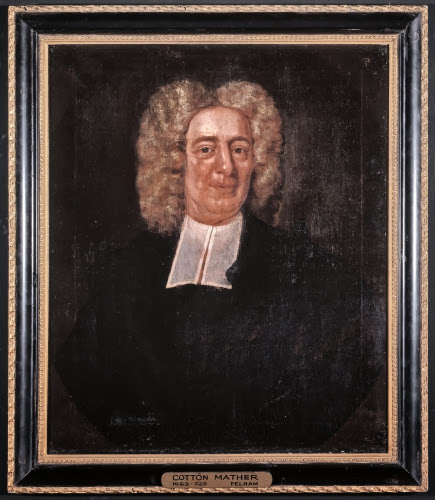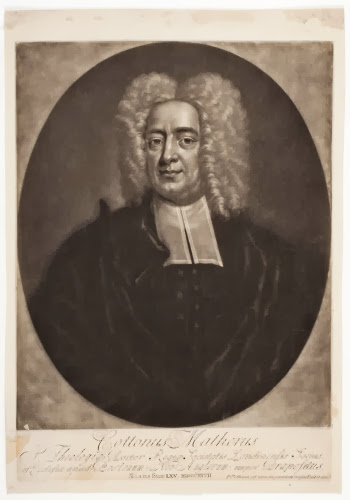One of the Forbearers of American Art: Peter Pelham
Since I moved to New England years ago, I have come to greatly to appreciate the rich history of our country. One of the most interesting aspects of realllllly early American art is the influence (naturally) of European Baroque and Rococo painting. Up until the late 1700s, most painting in America consisted of portraits. Many of those painters were transplants from Britain looking to capitalize on the steadily growing prosperity of the middle class in America.
 |
| Peter Pelham (1697–1751, Colonial America, born Britain), Portrait of Cotton Mather (1663–1728), 1727. Oil on canvas, 15 x 11.5 cm (6” x 4 ½”). © 2014 American Antiquarian Society, Worcester, MA. (AAS-5) |
As prosperity increased in the American colonies, many artists migrated to profit from it. Many of the earliest works in American collections were prints that were copies of European and British art of the time. Eventually, these artists came in demand to produce actual oil paintings. In a sense, it was the verification by the colonial American middle class of being equal with their European counterparts.
Peter Pelham was an artist in London who specialized in producing print copies of illustrious British people. When he moved to America in 1727 (Boston), he immediately established a studio that produced prints of illustrious American citizens. He also produced painted portraits. While his style is somewhat in the stiff Baroque English aesthetic, he had a lasting influence on American painters in the burgeoning market for “classy” realistic portraiture. American artists of that period have produced a lasting historical record of early America and American values through their portraits.
American artists followed in the traditions introduced by artists such as Pelham, including John Singleton Copley (1738–1815), Pelham’s stepson. Copley had observed his stepfather copying portraits in various printmaking media, becoming a self-trained artist who went on to become one of the most illustrious painters of pre-Revolution America. Although it is doubtful that Copley learned directly from Pelhams’s hard-edged realism, it is obvious that artists such as Pelham steered the course for the subsequent domination of extreme realism in American painting.
Here’s Pelham’s mezzotint version of his own painting:
 |
| Peter Pelham, Portrait of Cotton Mather, first US engraving, 1727. Mezzotint on paper, printed area: 24.8 x 35 cm (9 3/4" x 13 3/4"). © American Antiquarian Society, Worcester, MA, Gift of T.W. Streeter. (AAS-6) |
Mather was a controversial Puritan minister intimately involved in the notorious Salem witch trials. The mezzotint, from the same year as the painting, presents a considerably younger looking Mather.
Correlations to Davis Programs: Explorations in Art Grade 2: 2.8; Explorations in Art Grade 3:P 1.1, 1.2, 1.3; Explorations in Art Grade 4: 1.2; Explorations in Art Grade 5: 1.1, 1.2; A Community Connection: 2.4


Comments